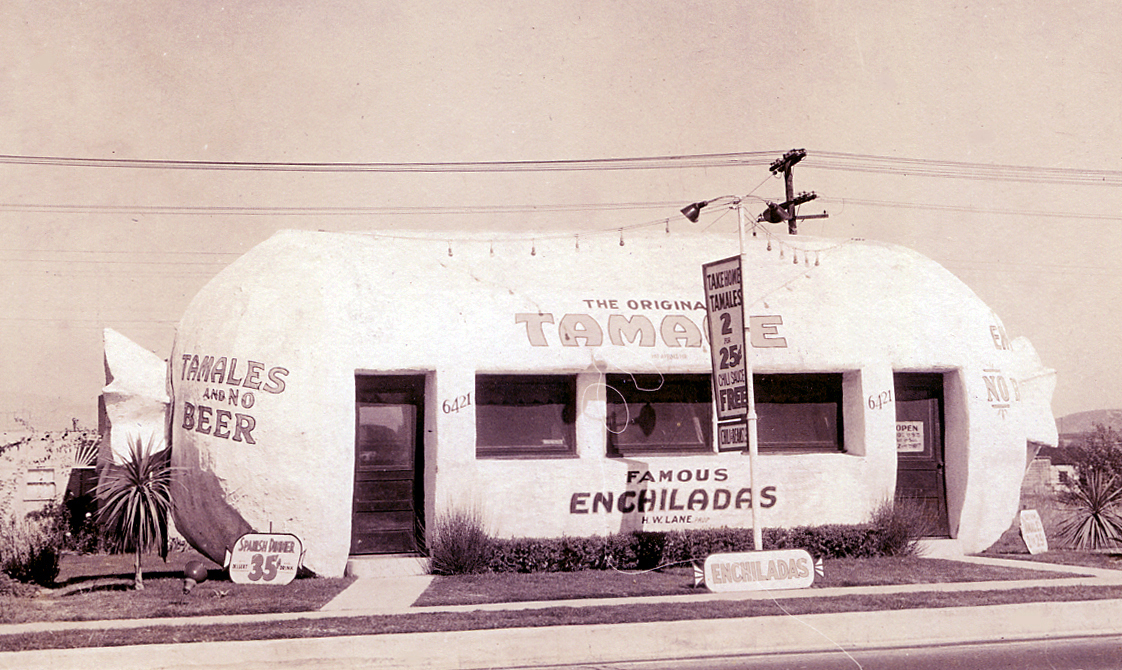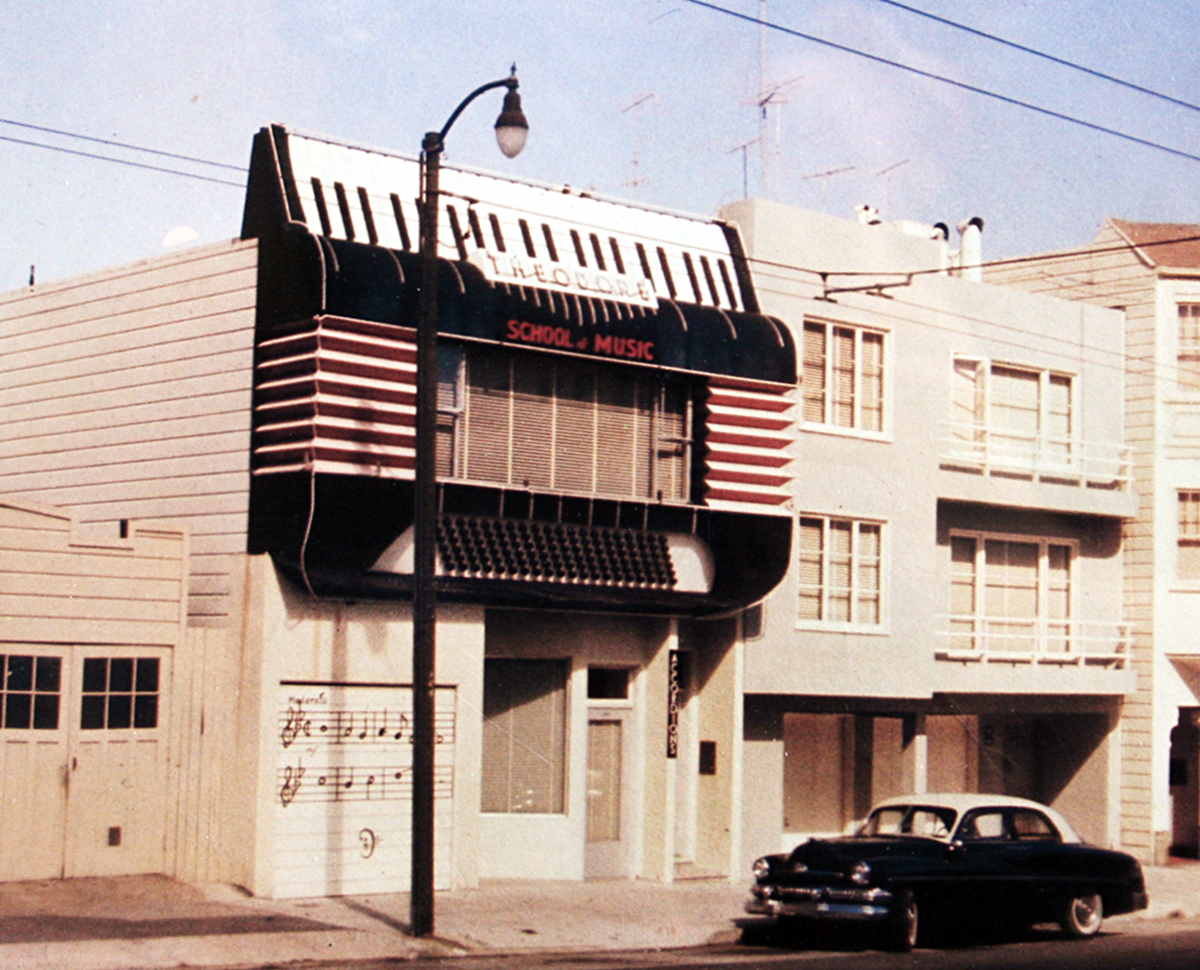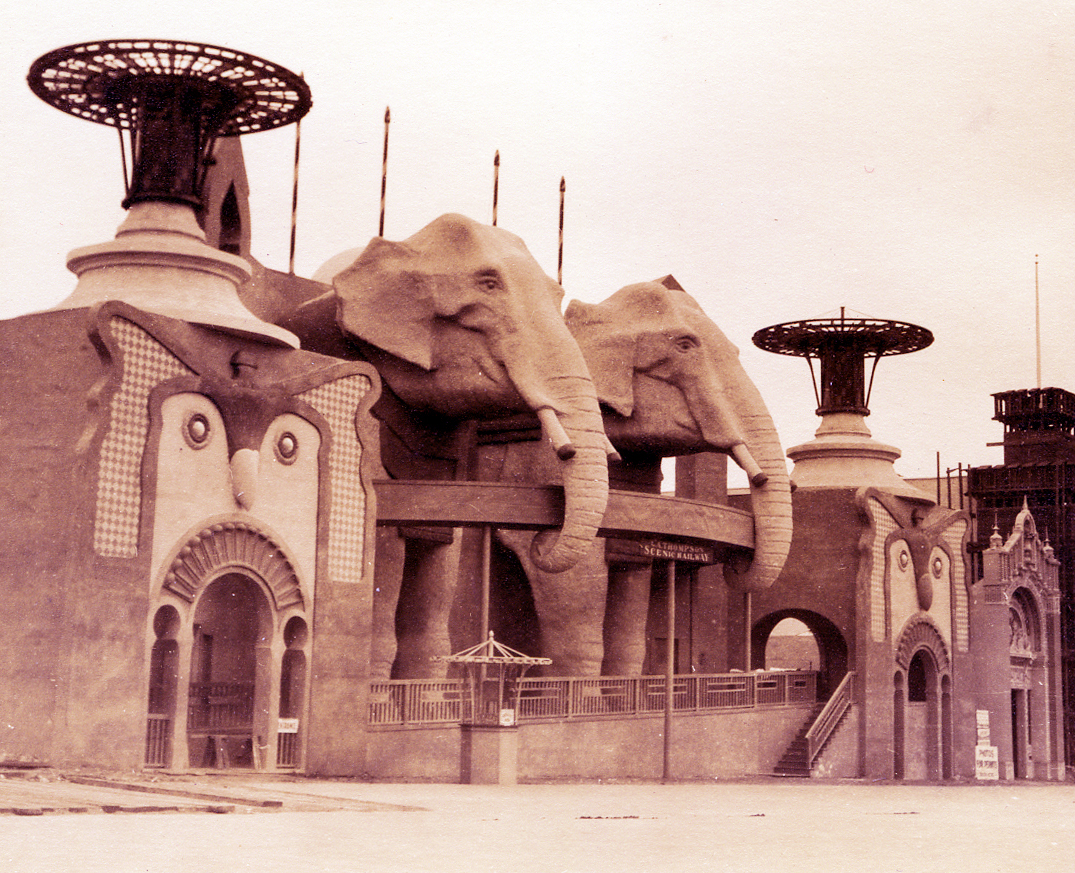This Giant Tamale Says It All!
 |
|
|
 |
|
|
 |
|
|
Jim Heimann has been tracking them down for four decades now—restaurants shaped like pigs selling ham sandwiches; restaurants that must be entered through the mouth in a giant, sculpted face; an accordion teacher's school with a second story shaped like a giant accordion.
Learn all about it at Heimann's upcoming illustrated talk sponsored by San Francisco Heritage, where he will reveal what all of this has to do with a world's fair whose centenary is currently being celebrated throughout the Bay Area, the Panama-Pacific International Exposition of 1915.
'Stucco Fantasy: How the PPIE Influenced Roadside Architecture in California' takes place at 6 p.m. Thursday, August 27 at the California Historical Society, 678 Mission Street, San Francisco.
The age of the automobile was beginning to transform how people shopped and where they ate, and roadside businesses needed to grab people's attentions as they zoomed by at 30 mph. At the PPIE, several pavilions in the amusement area called the 'Zone' suggested a high-tech solution using new materials, Heimann says—sculpt a building from lightweight chicken wire and stucco.
Not only was the technique fast and easy but the resulting structure—a giant orange, say, for a stand selling oranges—could be trucked to another location as needed.
"If you're going to see a giant tamale, it means you're going to buy a tamale there," Heimann explains.
Southern California boomed with these buildings, and more followed up north and across the country. An owl-shaped building for Hoot Hoot I Scream ice cream, a building shaped like a snow-covered mountain for Mount Baldy Café, and, in later years, a convenience store in Lathrop with a flyer saucer crashing into the roof.
"There isn't really an architecture firm you can hire to do this stuff," says Heimann, who's written two books on the subject, starting with California Crazy in 1980. He is writing a third, which will address the subject on an international scale. "So many of them are hand built, and many of them are very strange."
"It was vilified for many years," Heimann says of this architecture. "It was never documented in any of the high-end architecture magazines."
"It's often kitschy," he concedes, "and not very well designed." But he sees in the buildings a "need for people to create things. The results are very humorous sometimes, even though they were meant to be serious."
"What appealed to me initially, there was something guileless about it. The naiveté of the buildings was great. That you could just drive down the street and see these things, it was great. There was a building like a giant pup near where I lived. It resonated. It's kind of childlike."
For more on Heimann's 'Stucco Fantasy' talk, click here.




